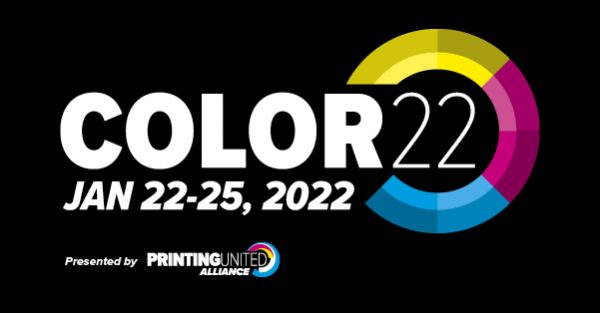COLOR22 / Color. Focused.
In San Diego, California, the color management conference COLOR22 kicked off at the Hilton La Jolla Torrey Pines. Running Jan. 23-25, the conference is a comprehensive look at everything color, with sessions geared toward everyone from seasoned professionals to those who are just putting the first toes in the water. Whether they are press operators, work in the prepress department of a print shop, or manage national brands, attendees have come together with a single goal: get better, more consistent color. Read the full story at piworld.com
Idealliance members, G7® Experts, and Color Management Professionals® participated in sessions spanning the latest in color management, presented by PRINTING United Alliance and premier partner, Idealliance.
Getting Technical About Color
The rest of the day’s sessions had a wide range of highly technical sessions led by industry experts, designed to give both seasoned experts and those new to color management new tools and skills to succeed. One example was “Achieving G7 on Direct-to-Garment,” led by Bruce Ridge, Director of Technical Services, Nazdar Companies. “Direct-to-garment (DTG) and G7 aren’t new,” he told attendees, “but applying G7 methodologies to DTG is.”
He noted that for textile printers, color management can be difficult, since as the light point changes across a textile, the color changes. When it comes to a lot of DTG printing, color management isn’t necessarily about hitting an exact color, most of the time, he noted, it’s about creating something that is pleasing to the eye and is repeatable across a run. There are a number of benefits to using G7 methodology when it comes to DTG, he noted:
- It allows you to meet customer expectations.
- It allows you to achieve a similar appearance across multiple machines.
- You can get faster color approvals.
- It is easier to troubleshoot problems on the press that do come up.
- You are using an established proofing process that has been tried and tested.
- You are participating in the global print community on equal terms.
As DTG printing continues to grow at exponential rates, he noted, this is an opportunity that printers shouldn’t ignore. But establishing best practices and using methods such as G7 to bring DTG applications in line with the color expectations of the rest of the print world can go a long way toward making it a profitable vertical to move in to.
Courtesy of Printing Impressions, read the full article here.
Mike Todryk, a color technical specialist at IWCO Direct , led a session titled “Color is Everyone’s Business” that helped to put color management and it’s role in the world of print and branding into perspective. He shared that he has been in printing for 25 years, and doing color management for 22, with his first COLOR event happening back in 2009. He shared, “my biggest takeaway from COLOR09 was ‘oh god, I’m not checking anything.'” That, he said, started his passion for not only creating and managing color, but for getting serious about process control, and ensuring the color remains stable, consistent, and repeatable across every printer, every technology, every substrate, and every job.
“I’m not a color scientist,” he told attendees, “I’m a ‘makeitworkist.’ I understand not everyone will agree with me, but these are the things that have worked for me.” He continued, “we have more than 40 pieces of equip that covers all the technology out there, and they all have to have a common appearance.”
To do that, he noted, IWCO Direct has several standards that all jobs must comply with — CRPC3 or CRPC6 depending on whether it is a coated substrate or uncoated — but G7 is what makes up the backbone of the process control operation. Every piece of equipment is calibrated to G7 standards, he said, and every press — across all print technologies, offset to digital — that can accept G7 curves is calibrated on the machine itself to G7 standards, as well as using G7 throughout the color management process. This, he notes, allows the shop to achieve a consistent appearance across every press in the building, to the point where if two presses are using the same substrate, he noted, they are functionally identical, even if they are different ink technologies.
Todryk also stressed the importance of education – not only of staying on top of the latest standards, trends, and technologies himself, but also constantly educating his team on the importance of color, his operators on how to get and maintain great color, and even his sales people and the end clients on why standards and color is so critical. And at the end of every job, IWCO does a post-mortem, making sure to ask not only what went right, but what didn’t, and figuring out ways to consistently improve every process.
Courtesy of Printing Impressions, read the full article here.



